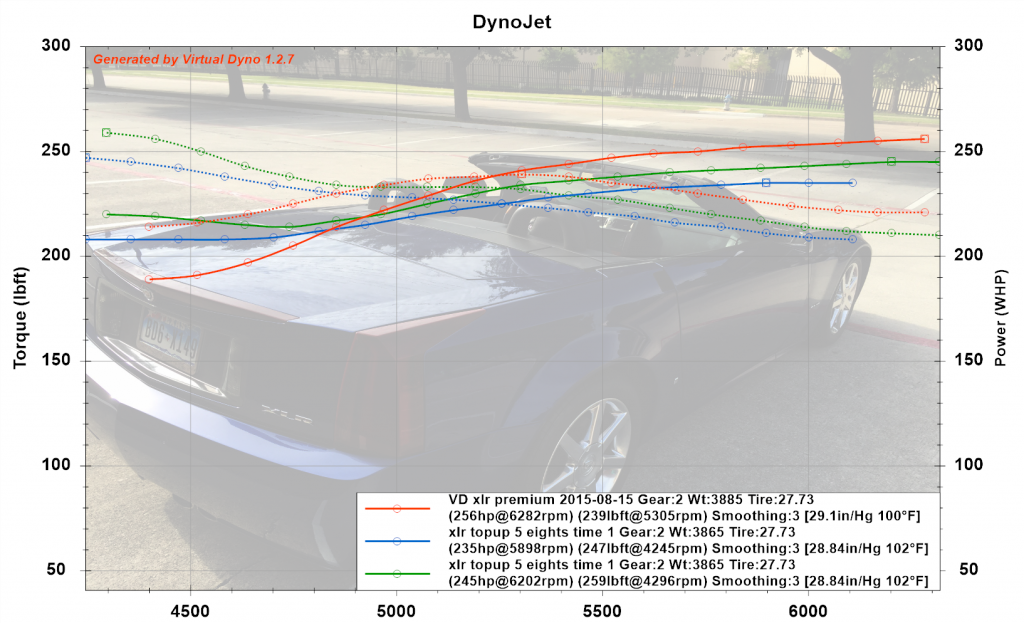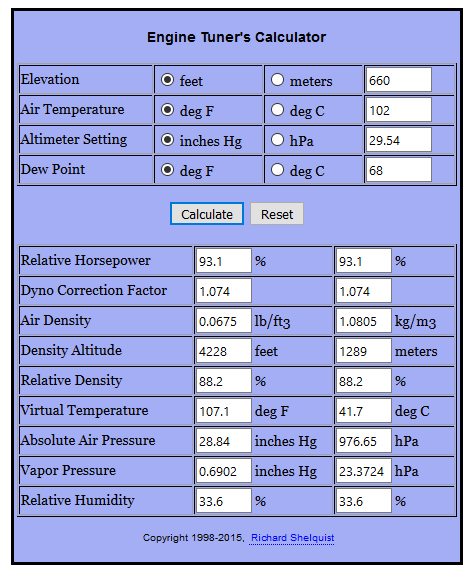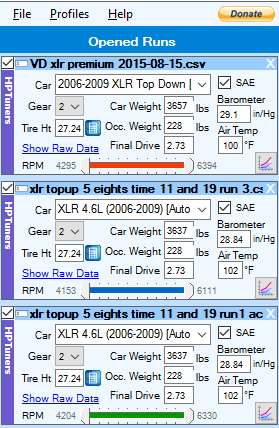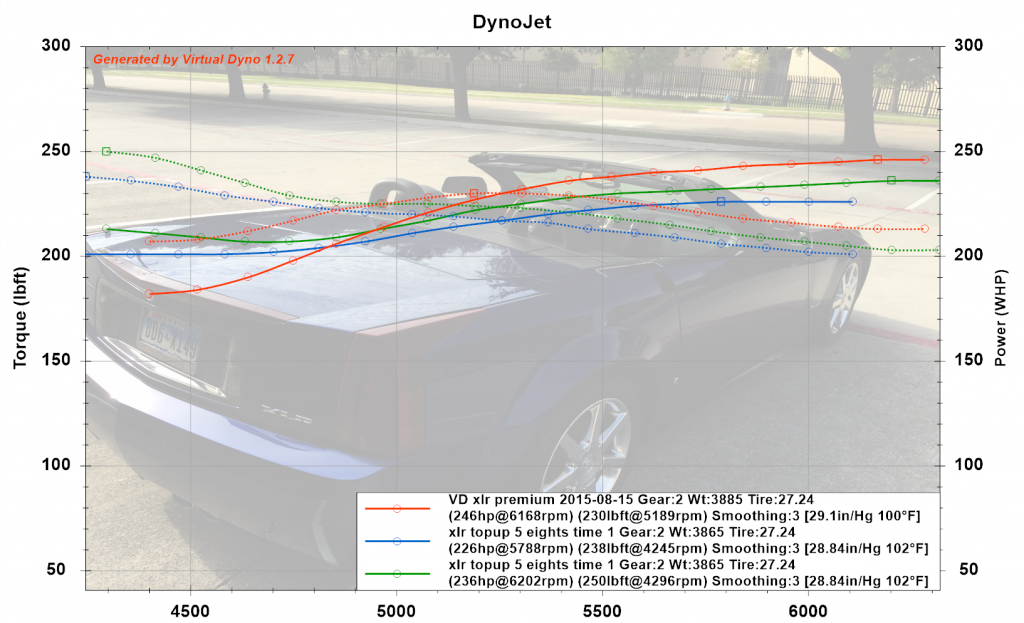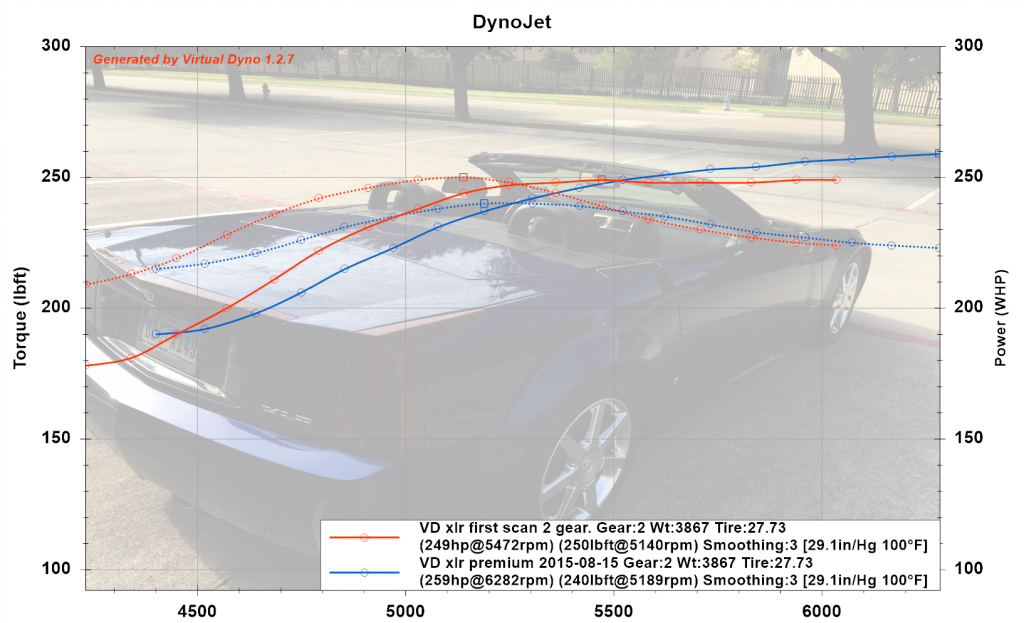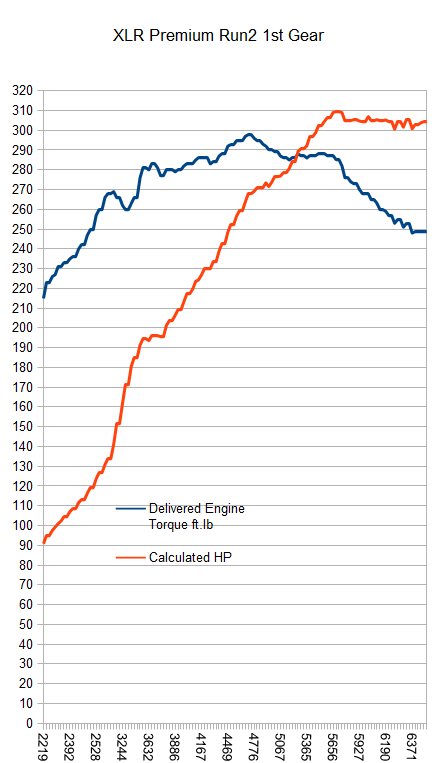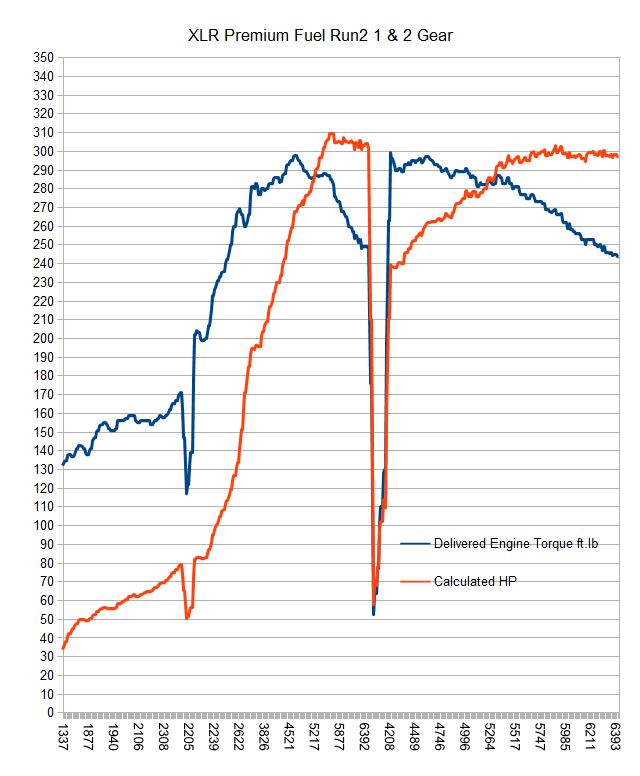This evening I ran some top-up comparison tests to help calibrate and establish a baseline. Previously I had tested with the XLR top down, enjoying the convertible. I was focused on monitoring calculated hp/torque, so aero wasn’t a factor. However, as I am comparing using Virtual Dyno, then aero is a factor and I wanted to know exactly how much of a factor, and to establish a top-up value.
[click to zoom in, back to return here] [This chart was based on incorrect tire diameter — see replacement chart below]
The Red line is the previous, Top-down test at 256/239 whp/lb-ft. Tonight’s comparable run from the exact same location is the Green line at 245/259 whp/lb-ft. The Blue line is another run tonight at a separate test location at 235/247 whp/lb-ft. Tonight’s runs were lower HP, higher Torque.
With the top up or down, the variance is in CD, or coefficient of drag. In my previous setup I wrote that I modeled the top-down impairment as a 0.05 CD adder. For today’s test I have left that delta alone, but I have revised the base CD to the 0.31 that Cadillac marketing materials said for the XLR, instead of the 0.35 one of the early magazine reports quoted. So Top-Up CD is modeled at 0.31, and top-down at 0.36.
I am using ‘absolute pressure’ from the dew point calculation for baro pressure for the virtual dyno calc. This takes altitude and local barometric pressure into account. Thanks to Richard Shelquist!
My conclusions are that tonight’s runs were lower results than the previous baseline. This may be normal day-to-day test-to-test variance (unknowns not accounted for), or it may suggest that the top-down drag disadvantage for the XLR is not as great as 0.05.
I enjoyed the XLR all day, and it was out in the sun prior to the tests. The important thing is to capture sufficient baseline data and to establish a baseline, and eliminate test to test variability. I may have to either only run tests first thing in the morning to avoid heat soak, or only run tests with the car heat soaked (!)
Update: the previous Virtual Dyno setup used 27.73 as a tire diameter, and I see from the calibration file it should be 27.24. This changes the results to following table:
Which is less than expected. I am including both charts for now to document my confusion, and to assist in analysis. Yes, tire size has a significant impact on calculated results. With SAE adjustments for conditions the 320 hp rated LH2 should make approximately 256 whp; I am uncertain why today’s results are 226-236 whp.

